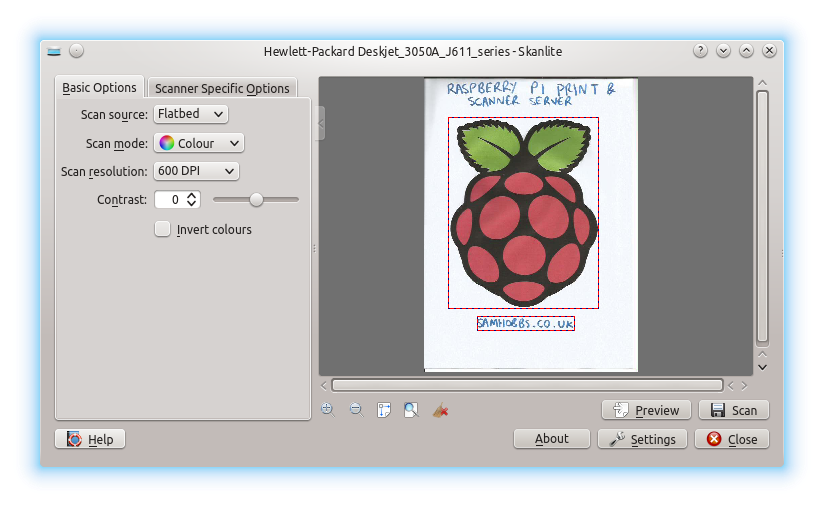The Raspberry Pi’s low cost and flexibility make it an ideal platform for building home network security tools. One such tool is PiAlert, an open source network security scanner designed to run on the Raspberry Pi. PiAlert provides an easy way to monitor your network for potential threats and vulnerabilities.
Key Takeaways
- The Raspberry Pi’s low cost, flexibility, and wired wireless connections make it an ideal network scanning platform.
- PiAlert provides customizable vulnerability scans to systematically identify weak points and security holes on your network.
- Scanning your network regularly with PiAlert allows you to proactively find and address threats before your systems can be compromised.
- Tailoring scan settings, notifications, and automations to your specific security priorities provides optimal protection.
- An active community provides extensions and plugins to integrate with home automation solutions.
How PiAlert Works?
PiAlert works by actively scanning devices on your network to check for open ports and known vulnerabilities. It can detect issues like open SMB shares, out of date software versions, default passwords, and more. PiAlert scans can be scheduled to run automatically on a routine basis. It also includes options for performing manual scans on demand.
When vulnerabilities are discovered on your network, PiAlert generates an alert with details about the issue and how serious it is. Alerts can be sent via email, SMS, Slack, Telegram, and other communication platforms. This allows you to quickly identify and respond to possible security holes before they are exploited by attackers.
Hardware Requirements For PiAlert
PiAlert can run on any Raspberry Pi model with a wired network connection. For best performance, PiAlert recommends using a Raspberry Pi 3 B+ or newer. You’ll also need:
- A MicroSD card with Raspbian installed
- Power supply for Raspberry Pi
- Ethernet cable or WiFi dongle
In addition to the Pi itself, you may want to connect an external USB hard drive for storing scan results and other data logs.
How To Install PiAlert?
Installing the PiAlert software on your Raspberry Pi consists of just two steps:
- Update your system – Make sure your Raspbian install is fully updated by running sudo apt-get update && sudo apt-get upgrade. This ensures you have any required dependencies.
- Install PiAlert – Install the PiAlert package by running: wget -O – https://get.pialert.com | bash. This downloads the latest version and configures your system.
Once installed, PiAlert can be accessed through the web interface at the Pi’s IP address port 8083 (e.g. http://192.168.1.100:8083).
Configuration Options of PiAlert
Before first use, you’ll want to walk through PiAlert’s configuration wizard to customize settings for your network. Key options include:
- Scan targets – Specify IP address ranges and hostnames to scan.
- Scanning mode – Quick scans ports & services, full scans all possible vulnerabilities.
- Active times – Schedule recurring scans for set days and times.
- Alert settings – Fine tune rules for generating alerts.
- Notifications – Configure email, Slack, Telegram etc.
Take time to tailor these settings for your specific home network and security priorities.
How To Running Security Scans?
Once configured, starting a scan is as simple as clicking the “Scan” button in the web UI. The PiAlert dashboard displays real-time updates as the scan profiles network devices and checks for weaknesses The amount of time a scan takes can vary significantly based on number of devices on your network and complexity of scans.
For recurring automated scans, enable the scanning schedule in PiAlert’s settings. This allows the Pi to routinely scan your network in the background without any effort on your part.
Scan results overview potential issues discovered, ranked by severity. You can click targets to drill down for additional vulnerability details and recommendations. Alert notifications also contain links directly to affected devices.
Identifying and Remediating Threats
When you receive a vulnerability alert from PiAlert, start by assessing the severity rating – critical, high, medium, or low. This quantifies the urgency of the issue. Next check the details of the exploit and determine what systems/services are impacted.
Common network vulnerabilities flagged by PiAlert include:
- Open ports – Closed ports deny access, open ports allow external connections.
- Default credentials – Using default passwords leaves services easily hacked.
- Unpatched firmware – Outdated firmware often harbors known exploits.
- SMB breaches – File shares permit unauthorized remote access.
Remediation steps depend on the specifics of the vulnerability. Typical responses may involve:
- Changing default credentials that are widely known.
- Updating outdated systems and firmware to newer secure versions.
- Disabling or closing unnecessary ports allowing attacks.
- Restricting access to file shares that have permissions issues.
Isolating and addressing these network weaknesses fortifies your environment against threats seeking easy high value targets.
Customizing with Alert Actions
Advanced users can take advantage of PiAlert’s alert action scripts to trigger automatic responses when threats are detected. For example, an alert action could immediately block compromised system ports via firewall rules when triggered by specific scan results.
Sample alert action scripts in Python, bash, PowerShell and other languages are available through the PiAlert community forums. Actions can also integrate with third party automation platforms. This takes network hardening to the next level for sophisticated home lab administrators.
Expanding Protection with WiFi Scanning
While PiAlert initially only supported scanning wired Ethernet networks, recent updates have added WiFi network scanning capabilities. This allows PiAlert to scan for devices connected to the network wirelessly.
Setting up WiFi scanning requires configuring the Raspberry Pi system itself to connect to your wireless network in station mode. PiAlert then piggybacks on this connection to actively scan the WiFi network rather than using the Ethernet port.
Enabling network-wide scans for wired and wireless devices provides complete visibility and protection of your entire home computing environment.
Community Integrations
One advantage of PiAlert’s open source design is all of the integration work done by the active user community. Community supported add-ons are available to connect PiAlert with platforms like Home Assistant, Node-RED, and many more.
Exploring community app stores like Adafruit’s Circuit Python Bundle can uncover helpful PiAlert integrations:
These addons simplify incorporating your network security status into existing smart home dashboards and automations.
Frequently Asked Questions
What are the hardware requirements to run PiAlert?
PiAlert works on any Raspberry Pi with a wired Ethernet connection, but works best on a Pi 3 B+ or newer model. You’ll also need a MicroSD card, power supply, and optional external USB hard drive.
Does PiAlert scan wireless networks?
Recent PiAlert versions added WiFi network scanning capabilities when the Raspberry Pi system is configured to join the wireless network in station mode.
What vulnerabilities can PiAlert detect?
PiAlert can detect issues like open ports, default credentials, unpatched firmware, SMB file share exposures, and other common network-based weaknesses.
How do I configure PiAlert when first installing?
On initial startup, PiAlert provides a local web-based configuration wizard to customize scan settings, schedules, notifications, and integrations for your unique home network environment.
Can PiAlert scans be scheduled automatically?
Yes, PiAlert allows you to configure recurring scans on set days and times through the settings panel without needing to manually trigger each one.
How long does a network scan take with PiAlert?
Scan duration depends on size of network being scanned and type of scan selected. Quick scans focus just on open ports and services while full scans interrogate all potential vulnerabilities more thoroughly.
Can PiAlert integrate with my home automation platform?
PiAlert provides open API for integration. Community add-ons available for Home Assistant, Node-RED, and other platforms to incorporate PiAlert detection capabilities.
Does PiAlert scan IoT or smart home devices?
Yes any device on your wired or wireless network with an IP address can be scanned by PiAlert, including Internet of Things devices like webcams, smart speakers, TVs etc.
Can PiAlert detect malware infections on my network?
PiAlert focuses more on device vulnerabilities rather than detecting existing malware. Updating systems found to have firmware or software holes should address potential for malware.
Does PiAlert only work on Raspberry Pi devices?
PiAlert leverages the Raspberry Pi platform for its scanning engine, but actually scans whatever networked devices you configure regardless if RPi, IoT, servers etc.
How are alerts delivered when threats detected?
PiAlert allows configuring notifications via email, SMS messaging, Slack, Telegram, or custom webhooks to deliver alerts to your device(s) of choice.
Can PiAlert block attacks or stop threats?
PiAlert itself focuses on detection – but by integrating PiAlert scan results with a firewall or automation rules you could have exploits disabled or blocked automatically.
Is PiAlert suitable for corporate network security?
PiAlert is designed primarily for home networks. Business networks with more stringent compliance requirements may necessitate a commercial grade NAC or NAP solution instead.
Does PiAlert identify network vs local vulnerabilities?
Yes – by actively scanning your network IP range, PiAlert can distinguish between weaknesses stemming specifically from networked services vs those only locally exploitable.
Can custom scripts be triggered to auto respond to threats?
Yes – PiAlert’s advanced rules engine supports creating event handlers and alert action scripts written in Python, bash, PowerShell, etc to enable automating security responses.
How many devices can be scanned with PiAlert RPi version?
The Raspberry Pi hardware maxes out at approximately 256 simultaneous scans. Multiple Raspberry Pis could be clustered for very large enterprise networks.
What is the average cost of damages from a network exploit?
According to security firms, the average network intrusion allows attackers to move laterally to compromise an average of 9 additional systems, with recovery costs often exceeding $1 million.
Is a HIDS like Snort better than a network scanner like PiAlert?
Host intrusion systems like Snort complement rather than replace network scanners like PiAlert – using both monitoring approaches provides defense-in-depth.
Conclusion
Installing PiAlert on a Raspberry Pi gives home networking enthusiasts an inexpensive but powerful network security scanner. Customizable scanning features allow you to systematically monitor your entire network for vulnerabilities in both wired and wireless devices. Routine scanning helps identify security weaknesses so you can proactively harden your network against potential intruders. Integrating with automation platforms even allows you to trigger automatic responses when threats arise. With PiAlert as part of a defense-in-depth security strategy, you can protect your home systems and Internet of Things devices from exploits.




